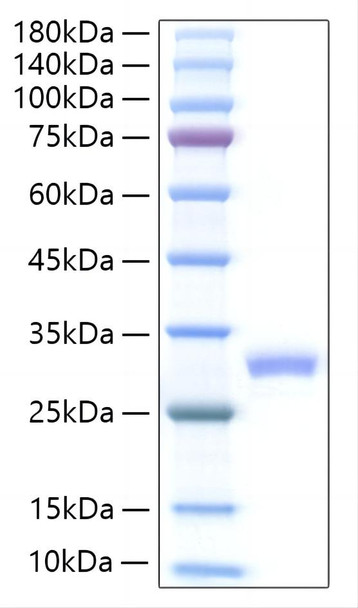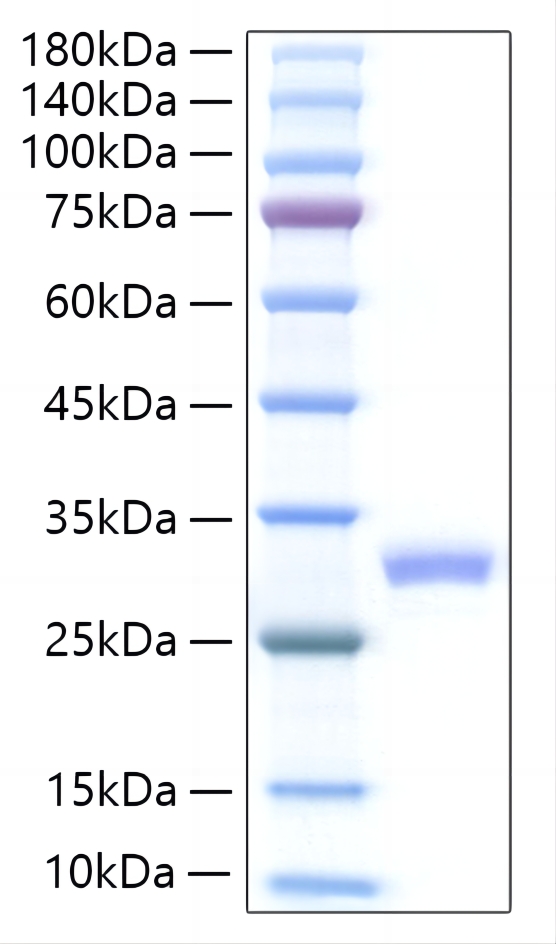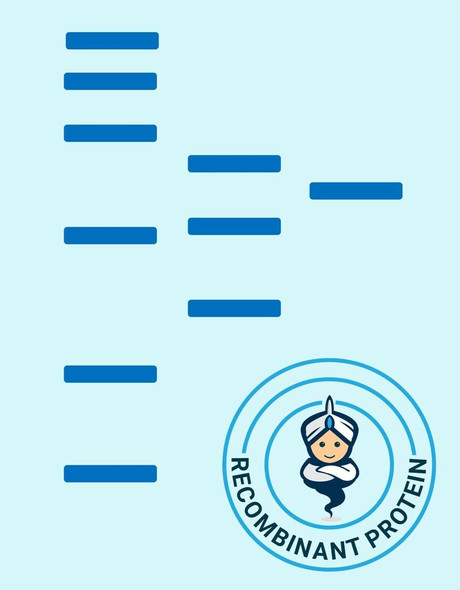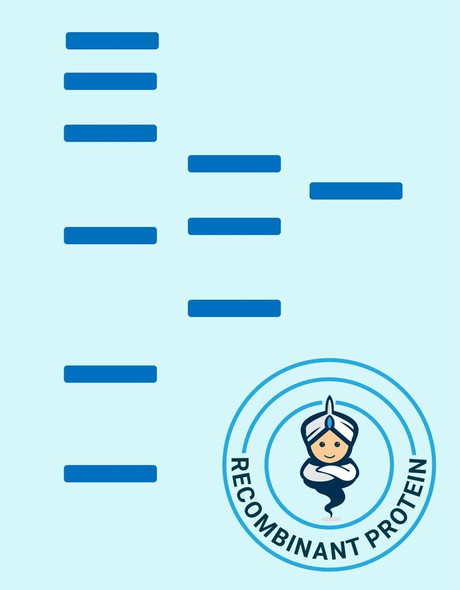Interleukin‑27 p28, also known as IL‑30, is a secreted 28 kDa protein that is considered a member of the IL‑6/IL‑12 interfamily cytokine family. p28/IL‑30 is one of several alpha ‑chain proteins that can associate with various beta ‑chain proteins to form heterodimeric cytokines in these families. The alpha -chains (e.g. IL‑6, IL‑11, Cardiotrophin‑1, CLC/CNTF, LIF, Oncostatin M, IL‑23 p19, IL‑27 p28/IL‑30, IL‑12/IL‑35 p35) have a four‑helix bundle structure, while the beta ‑chains (e.g. EBI‑3, CLF‑1, IL‑12/IL‑23 p40) resemble class 1 cytokine receptors. These cytokines utilize heteromeric cell surface receptors which contain shared as well as ligand‑specific subunits. Divergent biological responses are obtained from the combinatorial association of cytokine subunits and their interaction with various combinations of receptor subunits. Complexity in this system is increased by the generation of soluble receptors and by the competition between proteins for shared subunit pairing . p28/IL‑30 is expressed by macrophages and dendritic cells, and is up‑regulated in these cells by inflammatory stimuli . It was first described as a partner with EBI‑3 in the heterodimeric cytokine IL‑27 . IL‑27 signals through a receptor complex composed of IL‑27 R alpha /WSX-1/TCCR and gp130. This interaction enhances the proinflammatory activation of naïve CD4+ T cells, NK cells, mast cells, and monocytes and the cytotoxic activity of CD8+ T cells. IL‑27 also exhibits anti-inflammatory activity, including the induction of IL‑10 production by naïve and memory T cells, the activation of regulatory T cells (Treg), and the suppression of Th17 cytokine secretion . Alternatively, p28/IL‑30 associates with CLF‑1 to create a cytokine that triggers responses through IL‑27 R alpha, IL‑6 R alpha, and gp130. Like IL‑27, p28‑CLF-1 heterodimers co‑stimulate IFN‑ gamma production by NK cells, and induce IL‑10 secretion by CD4+ T cells. In contrast to IL‑27, however, p28‑CLF-1 is reported to promote the differentiation of Th17 cells . A third mode of p28 action enables it to stimulate cells that express both IL‑6 R alpha and gp130, but lack IL‑27 R alpha. Similar to the IL‑6 system, the presence of IL‑6 R alpha on the cell surface is not even required if p28/IL‑30 associates with a soluble form of IL‑6 R alpha. This combination can trigger trans signaling through gp130, a mechanism that has been demonstrated for complexes of IL‑6 with soluble IL‑6 R alpha . Over‑expression of p28/IL‑30 in vivo interferes with humoral antibody responses and protects from IL‑12 induced liver inflammation .







